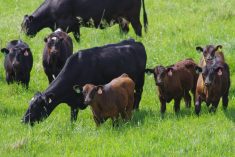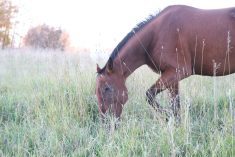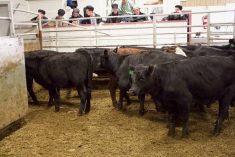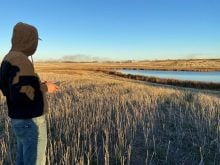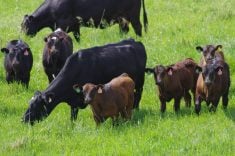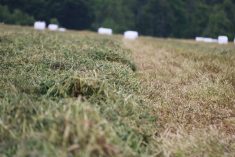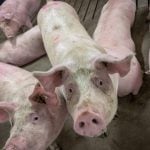Assessing the carrying capacity of your pasture is about more than just stocking rate.
Calculating the carrying capacity of the land will help you stock to a level that maintains the health and productivity of both the land and the animals that feed on it.
But how do you make that calculation?
The 13 participants in the recent 2011 Pasture Tour for Women, organized by South Parkland Beef Seminars, stopped by Charlotte Crawley’s farm near Clanwilliam where provincial forage and pasture specialist, Jane Thornton, demonstrated how.
Read Also

Linebreeding horses drives genetic bottlenecks
Too much linebreeding and prioritizing pedigree can narrow genetic diversity and lead to horse health problems in future generations.
It starts with going out into the fields and clipping samples of forage within an area 50 x 50 cm in size from parts of the pasture that have not been grazed. The samples are then dried down – using a microwave is fine as long as you are careful to put a cup of water in with the grass to prevent it from catching fire – and weighed once dry. Thornton then calculates the approximate forage yield based on those weights using the formula; grams x 35.6 = lbs./acre.
Thornton usually clips in mid- July and again in mid-September and recommends collecting data from a number of years to build up an average forage yield that is reasonably representative across various conditions.
The next step is to calculate the utilization rate, which determines how much forage is used or lost to grazing, trampling, insects and wildlife. This helps determine how much material needs to be left behind to maintain future production.
On Crawley’s farm, Thornton also clipped from grazed areas and showed a yield of around 2,500 lbs./acre in the non-grazed areas and 1,600 lbs./ acre in the grazed areas, which meant that about one-third was used during grazing. In other words, about two-thirds of the plant material was left behind after grazing, which, Thornton says, is pretty much ideal for the time of year to allow for rapid, good-quality regrowth and maintain the quality and volume necessary for the herd.
“On good pasture, cows can fill up in three to four hours,” says Thornton. “But on short pasture they are still only able to graze for a maximum of about 14 hours a day, allowing for time to chew and rest, so pasture that is grazed too low will limit their intake.”
Also, using pasture at a rate that exceeds the plant community’s ability to cope will promote weeds, lower forage production and encourage less palatable and productive species to invade the pasture.
Once the amount of forage yield and utilization rate have been determined, the carrying capacity can be calculated, which gives both the total forage available and the livestock forage requirements (see sidebar). There are two ways to use the information, either to determine the number of head a system can carry or to determine how many days a specific herd can graze in the system (see sidebar).
To determine litter yield, Thornton demonstrated how to hand rake all of the brown litter in an area 50 x 50 cm, making sure not to include any green material. There are then two ways to determine whether the amount of litter present is optimal, either by visually comparing the amount collected to the Rangeland Health Assessment Litter Threshold (see link below), or by calculating the weight of the litter using the same formula as used for the grass yield lbs./per acre.
The amount of litter that is left on the land can make a big difference in the performance of your pasture, says Thornton. Litter includes ungrazed residue from previous year’s growth, residue from bale grazing, fallen stems, leaf material and other partially decomposed material. Litter helps to conserve moisture by reducing evaporation, improving infiltration and cooling the soil surface.
NOT POSSIBLE
It’s simply not possible to have maximum lbs./day weight gain per cow and maximum lbs./acre gain for the pasture, says Thornton. Crawley, for example, is managing her pastures to obtain the maximum pounds of beef per acre. She moves the cattle every one to two days and tries to allow at least 30 days rest before regrazing.
Managing pasture resources for maximum benefit, as with many other areas of agricultural production, is often a balancing act that has many variables, like how much bush pasture is on the land, the type of operation and goals of the individual farmer. But depleting resources for some short-term gain usually catches up in the long run.
“It’s exceedingly hard to convince some people that they need to rest their pasture for 30 days,” says Thornton. “But a cow does not have an environmental conscience and it doesn’t care if it is degrading your resource. It’s important to balance the needs of the pasture with the needs of the cows.”
http://www.srd.alberta.ca/BiodiversityStewardship/Grazing RangeManagement/documents/ Range_Health_Grassland. pdf


